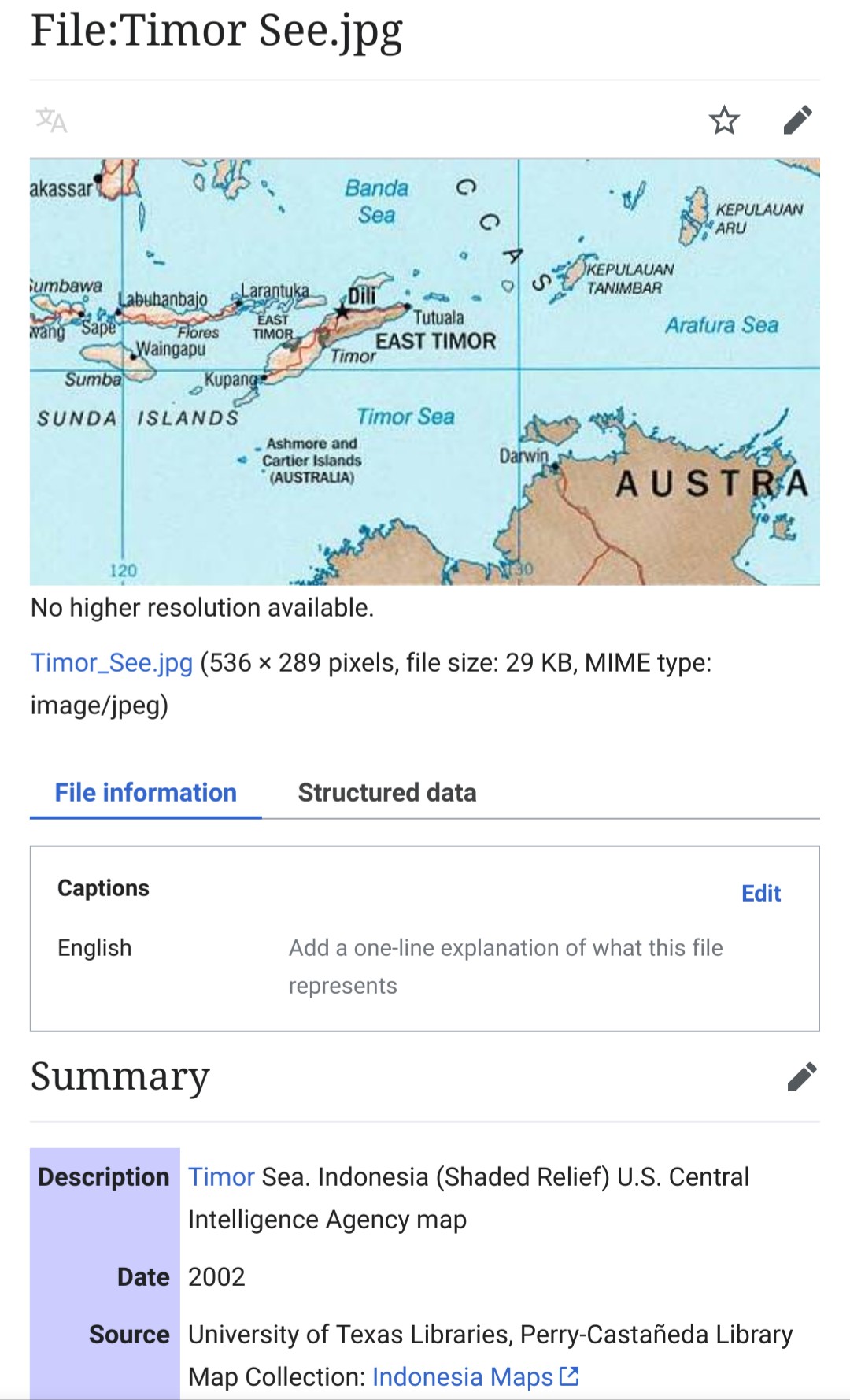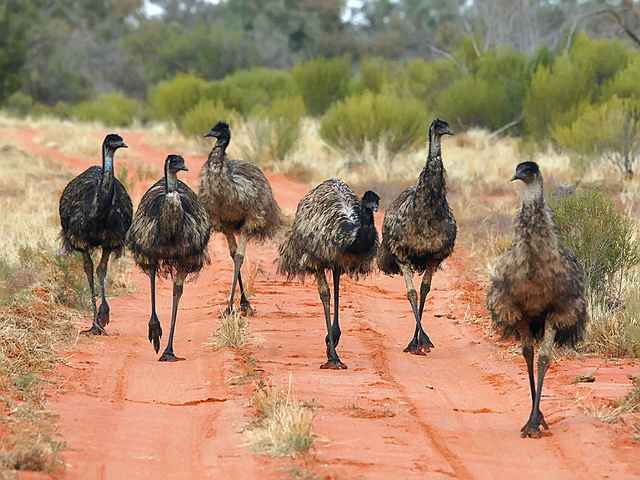The Emu War, also known as the Great Emu War, was a nuisance wildlife management military operation undertaken in Australia over the later part of 1932 to address public concern over the number of emus said to be running amok in the Campion district of Western Australia. The unsuccessful attempts to curb the population of emus, a large flightless bird indigenous to Australia, employed soldiers armed with Lewis guns—leading the media to adopt the name "Emu War" when referring to the incident. While a number of the birds were killed, the emu population persisted and continued to cause crop destruction.
background
Following World War I, large numbers of discharged veterans who served in the war were given land by the Australian government to take up farming within Western Australia, often in agriculturally marginal areas. With the onset of the Great Depression in 1929, these farmers were encouraged to increase their wheat crops, with the government promising—and failing to deliver—assistance in the form of subsidies. In spite of the recommendations and the promised subsidies, wheat prices continued to fall, and by October 1932 matters were becoming intense, with the farmers preparing to harvest the season's crop while simultaneously threatening to refuse to deliver the wheat.
The difficulties facing farmers were increased by the arrival of as many as 20,000 emus. Emus regularly migrate after their breeding season, heading to the coast from the inland regions. With the cleared land and additional water supplies being made available for livestock by the Western Australian farmers, the emus found that the cultivated lands were good habitat, and they began to foray into farm territory—in particular the marginal farming land around Chandler and Walgoolan. The emus consumed and spoiled the crops and left large gaps in fences where rabbits could enter and cause further problems.
Farmers relayed their concerns about the birds ravaging their crops, and a deputation of ex-soldiers were sent to meet with the Minister of Defence, Sir George Pearce. Having served in World War I, the soldier-settlers were well aware of the effectiveness of machine guns, and they requested their deployment. The minister readily agreed, although with conditions attached: the guns were to be used by military personnel, troop transport was to be financed by the Western Australian government, and the farmers would provide food, accommodation, and payment for the ammunition. Pearce also supported the deployment on the grounds that the birds would make good target practice, while it has also been argued that some in the government may have viewed the operation as a way of being seen to be helping the Western Australian farmers, to stave off the secession movement that was brewing. Towards that end, a cinematographer from Fox Movietone was enlisted
The War
Military involvement was due to begin in October 1932. The "war" was conducted under the command of Major Gwynydd Purves Wynne-Aubrey Meredith of the Seventh Heavy Battery of the Royal Australian Artillery, with Meredith commanding soldiers Sergeant S. McMurray and Gunner J. O'Halloran, armed with two Lewis guns and 10,000 rounds of ammunition.
First attempt
On 2 November, the men travelled to Campion, where some 50 emus were sighted. As the birds were out of range of the guns, the local settlers attempted to herd the emus into an ambush, but the birds split into small groups and ran so that they were difficult to target. Nevertheless, while the first fusillade from the machine guns was ineffective due to the range, a second round of gunfire was able to kill "a number" of birds.
The next significant event was on 4 November. Meredith had established an ambush near a local dam, and more than 1,000 emus were spotted heading towards their position. This time the gunners waited until the birds were in close proximity before opening fire. The gun jammed after only twelve birds were killed and the remainder scattered before any more could be shot. No more birds were sighted that day.
In the days that followed, Meredith chose to move further south, where the birds were "reported to be fairly tame", but there was only limited success in spite of his efforts. By the fourth day of the campaign, army observers noted that "each pack seems to have its own leader now—a big black-plumed bird which stands fully six feet high and keeps watch while his mates carry out their work of destruction and warns them of our approach". At one stage Meredith even went so far as to mount one of the guns on a truck, a move that proved to be ineffective, as the truck was unable to gain on the birds, and the ride was so rough that the gunner was unable to fire any shots. By 8 November, six days after the first engagement, 2,500 rounds of ammunition had been fired. The number of birds killed is uncertain: one account estimates that it was 50 birds, but other accounts range from 200 to 500, the latter figure being provided by the settlers. Meredith's official report noted that his men had suffered no casualties.
On 8 November, members in the Australian House of Representatives discussed the operation. Following the negative coverage of the events in the local media, that included claims that "only a few" emus had died, Pearce withdrew the military personnel and the guns on 8 November.
After the withdrawal, Major Meredith compared the emus to Zulus and commented on the striking manoeuvrability of the emus, even while badly wounded.
If we had a military division with the bullet-carrying capacity of these birds it would face any army in the world ... They can face machine guns with the invulnerability of tanks. They are like Zulus whom even dum-dum bullets could not stop.
Second attempt
After the withdrawal of the military, the emu attacks on crops continued. Farmers again asked for support, citing the hot weather and drought that brought emus invading farms in the thousands. James Mitchell, the Premier of Western Australia lent his strong support to renewal of the military assistance. At the same time, a report from the Base Commander was issued that indicated 300 emus had been killed in the initial operation.
Acting on the requests and the Base Commander's report, by 12 November the Minister of Defence approved a resumption of military efforts. In assessing the success of the cull, an article in the Coolgardie Miner on 23 August 1935 reported that although the use of machine guns had been "criticised in many quarters, the method proved effective and saved what remained of the wheat".
Megathreads and spaces to hang out:
reminders:
- 💚 You nerds can join specific comms to see posts about all sorts of topics
- 💙 Hexbear’s algorithm prioritizes struggle sessions over upbears
- 💜 Sorting by new you nerd
- 🌈 If you ever want to make your own megathread, you can go here nerd
Links To Resources (Aid and Theory):
Aid:
Theory:
Remember nerds, no current struggle session discussion here to the general megathread, i will ban you from the comm and remove your comment, have a good day/night :meow-coffee:
 have shut down Australian coal ports across the country for 3 consecutive days and counting.
have shut down Australian coal ports across the country for 3 consecutive days and counting.
